 July 28, 2016 John E. Ross, KD8IDJ, Editor
| |||||||||||||
FCC Proposes Rule Changes in Response to ARRL's "Symbol Rate" Petition, Seeks Comment The FCC has proposed to revise the Amateur Service Part 97 rules in response to the ARRL's so-called "Symbol Rate" Petition for Rule Making (RM-11708), filed in late 2013, and it has invited comments on its recommended changes. The Notice of Proposed Rule Making (NPRM) in WT Docket 16-239, released on July 28, had been making the rounds at the FCC since May. ARRL had asked the FCC "[W]e believe that the public interest may be served by revising the Amateur Service rules to eliminate the current baud rate limitations for data emissions, consistent with ARRL's Petition, to allow Amateur Service licensees to use modern digital emissions, thereby furthering the purposes of the Amateur Service and enhancing the usefulness of the service," the FCC said in its NPRM. "We do not, however, propose a bandwidth limitation for data emissions in the MF and HF bands to replace the baud rate limitations, because the rules' current approach for limiting bandwidth use by amateur stations using one of the specified digital codes to encode the signal being transmitted appears sufficient to ensure that general access to the band by licensees in the Amateur Service does not become unduly impaired." The ARRL staff was still reviewing the NPRM at publication deadline, and we will report further on this proceeding. ARRL Appoints Panel to Study License Requirements, Implements New UHF and Above Contest An ARRL Board of Directors-appointed ad hoc committee will study the current Technician license exam requirements and recommend possible changes, which may eventually find their way into an FCC petition for rule making. These could include consideration of a new entry-level license class. The panel's recommendations to the Board would be aimed at developing "a more targeted examination with a more limited set of privileges that would attract a new generation of amateurs."
The motion at the July 15-16 Board meeting by New England Division Director Tom Frenaye, K1KI, noted that the Novice license was discontinued in 2000, and the Morse code requirement lifted from all licenses a few years later, with the Technician ticket becoming the new entry point into Amateur Radio. It also cited "a considerable increase in difficulty for the new entry point" and new licensees who have been granted "extensive privileges not appropriate for all newcomers." "[W]e need to improve upon our efforts to attract newcomers to Amateur Radio and pass along the tradition of emergency and communication support, developing interest in hands-on projects, and improving on science, technology, engineering, and mathematics education," the motion asserted. With the International Amateur Radio Union Region 2 (IARU-R2) band plan set for review by delegates to the IARU Region 2 General Assembly this fall, the Board adopted recommendations of the ARRL HF Band Planning Committee, for ARRL to present at the conference for possible inclusion in the Region 2 band plan. These include:
The ARRL HF Band Planning Committee, chaired by Second Vice President Brian Mileshosky, N5ZGT, had issued two calls "inviting thoughtful feedback" from the Amateur Radio community regarding the current Region 2 band plan. The committee expressed its gratitude to everyone who provided input.
In his report, ARRL General Counsel Chris Imlay, W3KD, summarized "a very productive meeting" with FCC Special Counsel Laura Smith. Their discussion focused on improvements in the Amateur Auxiliary/Official Observer program, especially in light of the FCC's closure of several field offices. Imlay also noted that a recently enacted FAA reauthorization bill directs the FAA to develop new rules regulating the marking of certain antenna support structures between 50 and 200 feet. He told the Board that ARRL will participate in the FAA rulemaking proceeding, in an effort to minimize or eliminate any impact on Amateur Radio antennas. The Board approved the ARRL 222 MHz and Up Distance Contest to replace the August UHF Contest, which was dropped from the contest calendar last year. The new ARRL 222 MHz and Up event will debut in 2017. Details are pending, but responding to suggestions from the contest community, the event will use a scoring format that puts a premium on the distance spanned in each contact. The Board approved a Mobile DXCC Award as a "one-time, non-endorsable DXCC Award." Similar to the QRP DXCC, this award will be offered for contacts made from vehicles. In addition, the Board okayed an optional paper certificate to those achieving DXCC Honor Roll or #1 Honor Roll, in addition to the plaque and lapel pin already available to those individuals.
As a temporary measure, pending development of the Second Century Public Service Communications Delivery Plan, the Board agreed that National Traffic System⢠Area chairmen "shall be appointed by and serve at the pleasure of the ARRL President, aligned and consistent with the manner by which all other voluntary ARRL chairmen and coordinators of regional or national scope are authorized," and that NTS⢠Area staff members shall be appointed by and serve at the pleasure of their respective Area chairman. The Board also expressed its thanks and congratulations to the National Traffic System⢠for its outstanding service and assured the NTS⢠of a continued role in the League's public service communications plans. In his inaugural Board meeting report, ARRL CEO Tom Gallagher, NY2RF, told the Board that his current focus is on prioritizing resources to work within the recently adopted Strategic Plan. Gallagher said his goal is to position ARRL to address a new demographic of potential new licensees in the changing Amateur Radio market landscape. The ARRL Board Announces Award Winners At its second annual meeting on July 15-16, the ARRL Board of Directors conferred several League awards. The winner of the 2015 Hiram Percy Maxim Award is 13-year-old Christopher "Chris" Brault, KD8YVJ. Licensed since 2014 and active in a wide range of Amateur Radio-related activities, including antenna building and bicycle mobile operation, Brault, of Liberty Township, Ohio, is active in the recruitment and training of new amateurs by participating in such events as Jamboree On The Air (JOTA) and activities at the West Chester Amateur Radio Association/Voice of America Museum (WC8VOA), where he serves
as a volunteer. Brault was involved in developing an Amateur Radio on the International Space Station (ARISS) contact proposal, in cooperation with iSPACE and the WCARA/VOA Museum. The League's top award to a young radio amateur, the Hiram Percy Maxim Memorial Award goes annually to a current full ARRL member under the age of 21. The nominee's accomplishments and contributions to both the community of Amateur Radio and the local community should be of the most exemplary nature. Candidates are nominated by their Section Manager, and an award panel reviews the nominations received and selects the winner. The award carries a cash award of $1500 and a suitably engraved plaque.
The Board named Thomas D. Ritter, WY7KY, of Cheyenne, Wyoming, as the 2016 Philip J. McGan Silver Antenna Award recipient. Ritter was cited for demonstrating outstanding volunteer public relations success on behalf of Amateur Radio throughout the state of Wyoming and the Rocky Mountain Division. He has promoted licensing classes for the Shy-Wy Amateur Radio Club and others and actively sought to unify the Public Information Officers in their public relations efforts on behalf of Amateur Radio in the state of Wyoming. Ritter also was recognized for regularly promoting Amateur Radio to the general public through print and radio interviews as well as through social media, and he routinely engages in public relations outreach during public service events and ARRL Field Day. The award's namesake, journalist Philip J. McGan, WA2MBQ (SK), served as the first chairman of the ARRL's Public Relations Committee.
Andrew J. Buckler, K2OP, of Wenham, Massachusetts, was honored with the Doug De Maw W1FB Technical Excellence Award for his article "A Solid State 1.25 kW Linear Amplifier," which appeared in the January 2015 issue of QST. The award is based on the recommendation of a committee of QST Technical Advisors. Donald Ohse, W5DRO, of Midwest City, Oklahoma, was named to receive the 2015 ARRL Technical Service Award. The Board credited Ohse with playing a leading role in advancing the art and science of Amateur Radio in his local community by teaching licensing classes, as well as monthly night classes that focus on in-depth continuing education on technical topics. He is active in organizing operating activities and community
service events, including serving as liaison to local officials in maintaining their outdoor emergency alert warning systems, and he is an Official Observer. Ohse has also served as a resource to amateurs in his community on RFI and related problems. His recognition came on the recommendation of the ARRL Laboratory. The Board also adopted a Programs and Services Committee recommendation to revise the terms of reference for the ARRL Joe Knight Distinguished Service Award, presented to a Section Manager of distinction. The terms of reference for the award were revised to stipulate a minimum of 8 years of service as a Section Manager in order to be eligible for the award. FCC Notice of Violation Alleges Malicious Interference, Transmitting Music, Failure to Identify The FCC has issued a Notice of Violation (NoV) to a California Amateur Radio licensee, alleging that he caused willful and malicious interference, transmitted music, and failed to identify properly. The FCC Enforcement Bureau said in the Notice, issued on July 13 to Philip J. Beaudet, N6PJB, of Burney, that agents from the San Francisco, California, and Portland, Oregon, offices observed the violations on four occasions in August and October 2015. A General class licensee, Beaudet formerly held the call sign WD6FGE.
The Enforcement Bureau said the Notice does not preclude it from taking further action, if warranted, including issuing a Notice of Apparent Liability for Forfeiture with respect to the cited violations. The Bureau gave Beaudet 20 days to respond in writing to "fully explain each violation, including all relevant surrounding facts and circumstances." Updated Android Digital QST App Now Available A completely rebuilt digital QST app for the Android platform is now Readers who have automatic updates turned off can obtain the new version by visiting the Google Play Store. Functionality in the new app remains the same, although the layout is slightly different -- displaying the most recent magazine at the top and two or three issues per row, instead of in a single column. Download times should be faster as well. For optimal performance, it is recommended that Android users have the most up-to-date Android operating system, which is Marshmallow 6.0. Digital QST is available on or about the 10th of each month. National Parks on the Air Update With more than 525,000 QSOs uploaded for ARRL's National Parks on the Air (NPOTA) event, Activators are teaming up to share the experience of being at a park and creating new friendships at the same time. We've seen a lot of Activators joining forces recently, such as veteran activator Bill Jourdain, AB4BJ, who got together with 17-year-old Ruth Willet, KM4LAO, and her mom, Sharon, KM4TVU, to activate Chickamauga and Chattanooga National Military Park earlier this month. Ruth also shared an activation with NPOTA Activator extraordinaire Stuart, KB1HQS (see the video).
For July 28-August 3, the schedule shows 43 activations, including the rare Channel Islands National Park in California, and the even rarer Denali National Park in Alaska. Details about these and other upcoming activations can be found on the NPOTA Activations calendar. Keep up with the latest NPOTA news on Facebook. Follow NPOTA on Twitter (@ARRL_NPOTA). The Doctor Will See You Now! "Magnetic Loops" is the topic of the latest (July 28) episode of the "ARRL The Doctor is In" podcast. Listen...and learn! Sponsored by DX Engineering, "ARRL The Doctor is In" is an informative discussion of all things technical. Listen on your computer, tablet, or smartphone -- whenever and wherever you like!
Enjoy "ARRL The Doctor is In" on Apple iTunes, or by using your iPhone or iPad podcast app (just search for "ARRL The Doctor is In"). You can also listen online at Blubrry, or at Stitcher (free registration required, or browse the site as a guest) and through the free Stitcher app for iOS, Kindle, or Android devices. If you've never listened to a podcast before, download our beginner's guide. Just ahead in August: "SWR." Amateur Radio Alive and Well in Turkey Contrary to erroneous reports making the rounds on various Internet sites, no Amateur Radio licenses were suspended or revoked in Turkey in the wake of the failed July 15 coup.
The erroneous reports cite a release from RTUK, which oversees broadcasting. Amateur Radio and other wireless industries are regulated by BTK, a separate agency. Three stations in Turkey were reported heard on 10 meters last week during an opening to Central Europe -- TA1BM, TA1PB, and YM7TEN/B. IARU member society TRAC has not been closed, nor has its website been blocked or shut down. Ham Radio 2016 in Friedrichshafen Attracts a Bumper Crowd Attendance was up slightly this year at Europe's largest Amateur Radio gathering -- the 41st annual international Ham Radio 2016 in Friedrichshafen, Germany. Officials at the venue -- Die Messe Friedrichshafen -- say "everything went perfectly" as hams joined "makers" for the June 24-26 weekend. The "double feature" exposition attracted 17,230 visitors, up from 17,080 last year. Die Messe officials did not break out numbers for radio amateurs and those attending the Maker Faire Bodensee.
ARRL CEO Tom Gallagher, NY2RF, who attended Ham Radio for the first time this year, said the gathering was a good opportunity to meet his counterparts in Europe. He pointed out the "nice location" and that there was a higher concentration of youngsters attending than typically seen at US events. ARRL President Rick Roderick, K5UR, headed the League's contingent to Friedrichshafen, which, in addition to Gallagher, included International Affairs Vice President Jay Bellows, K0QB; Marketing Manager Bob Inderbitzen, NQ1R; Assistant Field Services and Radiosport Manager Norm Fusaro, W3IZ, and retired CEO David Sumner, K1ZZ. Nearly 200 exhibitors and vendors from 3 dozen countries were on hand at Friedrichshafen. Like Hamvention, Ham Radio is better known by its location.
"Friedrichshafen is like Europe's Dayton for us," said Yaesu Technical Sales Manager Paul Bigwood, G3WYW. "The Ham Radio is extremely international. Everyone here comes from all over the world -- we even had visitors from Australia at our stand. The show has an excellent reputation; it is very important for us to be here." IARU Region 1 Emergency Coordinator Greg Mossop, G0DUB, said two meetings at Friedrichshafen for radio amateurs involved in emergency communication were well received. On Friday, June 24, the first IARU Region 1 Emergency Communication meeting attracted some 20 attendees from 10 countries. Topics covered a wide range and included reports from other regions, proposals to change the IARU Emergency Message procedure, and information on emergency communication groups in Germany, Poland, and Slovenia. The presentations are available on the IARU Region 1 website (click on "Order by Submit Date" to see the 2016 documents).
Two veteran International Amateur Radio Union Region 1 (IARU-R1) volunteers were honored at Friedrichshafen. Christian Verholt, OZ8CY, the former Chair of the Electromagnetic Compatibility (EMC) Working Group and former EMC Advisor to the IARU International Secretariat, was presented with the IARU President's Diamond Award by IARU President Tim Ellam, VE6SH/G4HUA, and Vice President Ole Garpestad, LA2RR. This new award recognizes exceptional contributions over many years. Verholt also received the IARU Region 1 Medal from Region 1 President Don Beattie, G3BJ, in recognition of his work on EMC matters in Region 1 for more than 20 years. Beattie presented Wolfgang Hadel, DK2OM, with the Region 1 Medal in recognition of his ongoing, exceptional leadership of the successful IARU Region 1 Monitoring System (IARUMS). Due to a scheduling difficulty, Ham Radio 2017 will take place July 14-16, 2017. Read more. -- Thanks to Ham Radio, Southgate Amateur Radio News, and IARU Region 1 UK Astronaut Tim Peake, KG5BVI/GB1SS, Heads Ham Contingent to 10 Downing Street UK Astronaut Tim Peake, KG5BVI/GB1SS -- just back from a duty tour on the International Space Station -- headed a contingent of radio amateurs and youngsters invited to visit new Prime Minister
Theresa May at 10 Downing Street earlier this month. The July 18 reception at the PM's residence celebrated the success of Peake's "Principia Mission" and his time in space. Sandringham School student Jessica Leigh, M6LPJ, and her head teacher Alan Gray, G4DJX, were among those also on hand, along with students from the Principia Mission schools. Jessica, then a brand-new ham, was the first student in the UK to speak with Peake during an Amateur Radio on the International Space Station (ARISS) ham radio contact with the ISS. Peake inaugurated the use of the ISS Ham TV system when he spoke on January 8 with Jessica and other students at Sandringham School in Hertfordshire, England. Also attending the reception at 10 Downing Street were Italian astronaut Samantha Cristoforetti, IZ0UDF, and the UK's first astronaut, Helen Sharman, GB1MIR, who traveled to the Russian Mir space station in 1991.
Cristoforetti was among those responsible for configuring the Ham TV digital Amateur Radio TV (DATV) system on the space station. Peake dedicated part of his 6 months in space to educational activities for youngsters on Earth. He described his Principia Mission as the largest and most ambitious educational outreach program of any European space mission. It was supported by ARISS, the UK Space Agency, the ESA, and others on a long list of educational institutions and organizations. The July 29-31 AMSAT-UK International Space Colloquium in Guildford will feature presentations about Peake's Principia Mission, and Sandringham School students will talk about their ARISS experience. Past AMSAT President Doug Loughmiller, W5BL, SK Past AMSAT President and AMSAT Journal Editor Doug Loughmiller, W5BL (ex-KO5I), of McKinney, Texas, died on July 22. An ARRL Life Member, he was 60 and had been suffering from cancer.
Loughmiller was probably best known in recent years as a high-altitude Amateur Radio ballooning enthusiast, and he evangelized on that topic at the ARRL Centennial Convention in 2014 as well as at Dayton Hamvention®. He was the co-moderator of the BalloonSat Forum at Hamvention, and the co-founder of ARBONET (Amateur Radio Balloon over North East Texas) -- described as "a poor man's space program." He also held a pilot's license and was interested in motor sports, fishing, and scuba diving. He also was an active Amateur Radio instructor, and he was the recipient of the 2008 Herb S. Brier Award bestowed by ARRL to recognize a volunteer Amateur Radio instructor. Loughmiller grew up in Indiana and, after graduating from high school there, he attended Paris Junior College in Texas. His first career was as a baker, but from there he jumped to a job in the Satellite Communications Department at the University of Surrey in England, as a payload supervisor. Subsequently he pursued a successful career in the electronics component industry, working for Arrow Electronics, Future Electronics/FAI, and RAM Electronic Sales. Read more. The K7RA Solar Update Tad Cook, K7RA, Seattle, reports: We have fallen back to a period of zero sunspots that, so far, has lasted for 3 days. This followed a brief uptick in solar activity in the July 15-21 period. But the STEREO spacecraft website shows sunspots on the side of the Sun facing away from Earth, and these should drift back into view as our Sun rotates.
Predicted solar flux from USAF and NOAA space weather observers is 70 on July 28 to August 4; 80 and 95 on August 5-6; 105 on August 7-16; 100, 90, 85, and 80 on August 17-20; 75 on August 21-22, and 70 on August 23-31. Solar flux then rose to 105 on September 3-10. Predicted planetary A index is 12, 10, and 8 on July 28-30; 5 on July 31-August 2; 8, 20, and 15 on August 3-5; 10 on August 6-7; 20, 8, 12, 10, and 8 on August 8-12; 5 on August 13-14; 8, 12, and 5 on August 15-17; 8 on August 18-19; 5, 8, 15, 12, 8, 20, 12, and 8 on August 20-27; 5 on August 28-29; 20 on August 30-31; 15 on September 1, and 10 on September 2-3. On July 28, 2016 the Australian Space Forecast Centre issued a geomagnetic disturbance warning, predicting the possibility of elevated geomagnetic activity due to the expected arrival of a high-speed solar wind stream from a coronal hole. The Center predicted unsettled to active, possible minor storm periods for July 28, and quiet to unsettled for July 29, with possible active periods. Sunspot numbers for July 21 through 27 were 49, 36, 34, 16, 0, 0, and 0, with a mean of 19.3. The 10.7 centimeter flux was 100.1, 90.4, 86.2, 82.2, 73.6, 73.5, and 71.6, with a mean of 82.5. Estimated planetary A indices were 5, 8, 8, 14, 18, 5, and 3, with a mean of 8.7. Estimated mid-latitude A indices were 6, 8, 10, 12, 15, 7, and 4 with a mean of 8.9. Send me your reports and observations.
. . . . . .
Just Ahead in Radiosport
See the ARRL Contest Calendar for more information. For in-depth reporting on Amateur Radio contesting, subscribe to The ARRL Contest Update via your ARRL member profile e-mail preferences. Upcoming ARRL Section, State, and Division Conventions
Find conventions and hamfests in your area.
. .
Subscribe to...
Free of charge to ARRL members...
| |||||||||||||
.jpg) to change the Part 97 rules to delete the symbol rate limit in §97.307(f) and replace it with a maximum bandwidth for data emissions of 2.8 kHz on amateur frequencies below 29.7 MHz.
to change the Part 97 rules to delete the symbol rate limit in §97.307(f) and replace it with a maximum bandwidth for data emissions of 2.8 kHz on amateur frequencies below 29.7 MHz..jpg)
.jpg)
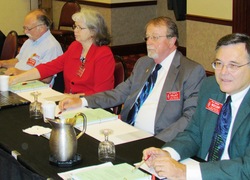
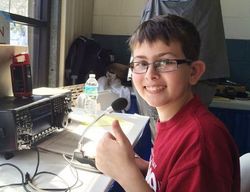
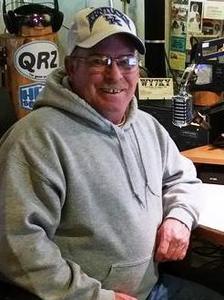
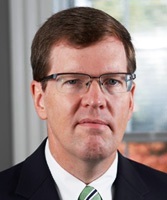
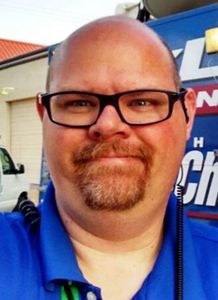
.jpg) FCC agents responding to an interference complaint used direction-finding techniques to pin down the source of an interfering signal on 3908 kHz to Beaudet's residence. They also observed and recorded transmissions of music on 3908 kHz from Beaudet's amateur station. The agents said that while they were monitoring and recording, the station's assigned call sign was not transmitted at the end of each communication.
FCC agents responding to an interference complaint used direction-finding techniques to pin down the source of an interfering signal on 3908 kHz to Beaudet's residence. They also observed and recorded transmissions of music on 3908 kHz from Beaudet's amateur station. The agents said that while they were monitoring and recording, the station's assigned call sign was not transmitted at the end of each communication. available from publisher Nxtbook Media, which responded to readers' frustrations about getting the app to work properly. The fix took longer than expected, but it is finally here! Members who have enabled automatic updates on their devices will not have to do anything; the application will update automatically.
available from publisher Nxtbook Media, which responded to readers' frustrations about getting the app to work properly. The fix took longer than expected, but it is finally here! Members who have enabled automatic updates on their devices will not have to do anything; the application will update automatically.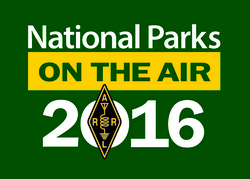 If you are an Activator, reach out to others in your club and share the fun of an NPOTA activation. If you're interested in activating but don't know where to start, join the
If you are an Activator, reach out to others in your club and share the fun of an NPOTA activation. If you're interested in activating but don't know where to start, join the .jpg) Every 2 weeks, your host, QST Editor in Chief Steve Ford, WB8IMY, and the Doctor himself, Joel Hallas, W1ZR, will discuss a broad range of technical topics. You can also e-mail your questions to
Every 2 weeks, your host, QST Editor in Chief Steve Ford, WB8IMY, and the Doctor himself, Joel Hallas, W1ZR, will discuss a broad range of technical topics. You can also e-mail your questions to 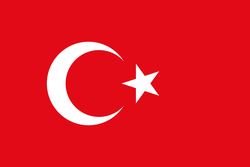 "There is no ham radio license revoked in Turkey, and ham radio operators are operating normally," said Aziz Sasa, TA1E, the president of Turkey's International Amateur Radio Union member society
"There is no ham radio license revoked in Turkey, and ham radio operators are operating normally," said Aziz Sasa, TA1E, the president of Turkey's International Amateur Radio Union member society 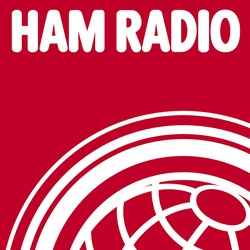
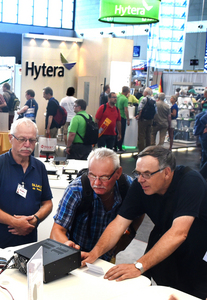
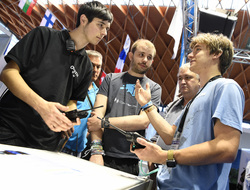
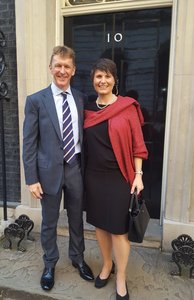

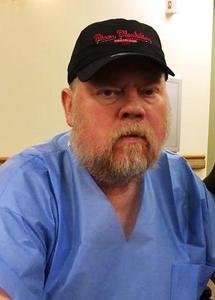
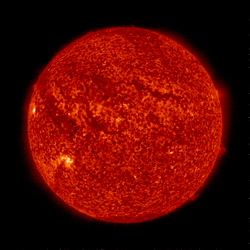 Comparing the July 21-27 period to the previous 7 days, the average daily sunspot number declined from 58.1 to 19.3, and the average daily solar flux dipped from 103.6 to 82.5. The average daily planetary A index went from 10.6 to 8.7, while the mid-latitude A index declined from 11.1 to 8.9.
Comparing the July 21-27 period to the previous 7 days, the average daily sunspot number declined from 58.1 to 19.3, and the average daily solar flux dipped from 103.6 to 82.5. The average daily planetary A index went from 10.6 to 8.7, while the mid-latitude A index declined from 11.1 to 8.9. .
.







